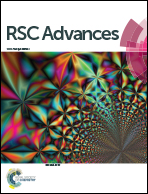Enzymatic synthesis of enantiopure alcohols: current state and perspectives
Abstract
Enantiomerically pure alcohols, as key intermediates, play an essential role in the pharmaceutical, agrochemical and chemical industries. Among the methods used for their production, biotechnological approaches are generally considered a green and effective alternative due to their mild reaction conditions and remarkable enantioselectivity. An increasing number of enzymatic strategies for the synthesis of these compounds has been developed over the years, among which seven primary methodologies can be distinguished as follows: (1) enantioselective water addition to alkenes, (2) enantioselective aldol addition, (3) enantioselective coupling of ketones with hydrogen cyanide, (4) asymmetric reduction of carbonyl compounds, (5) (dynamic) kinetic resolution of racemates, (6) enantioselective hydrolysis of epoxides, and (7) stereoselective hydroxylation of unactivated C–H bonds. Some recent reviews have examined these approaches separately; however, to date, no review has included all the above mentioned strategies. The aim of this mini-review is to provide an overview of all seven enzymatic strategies and draw conclusions on the effect of each approach.



 Please wait while we load your content...
Please wait while we load your content...